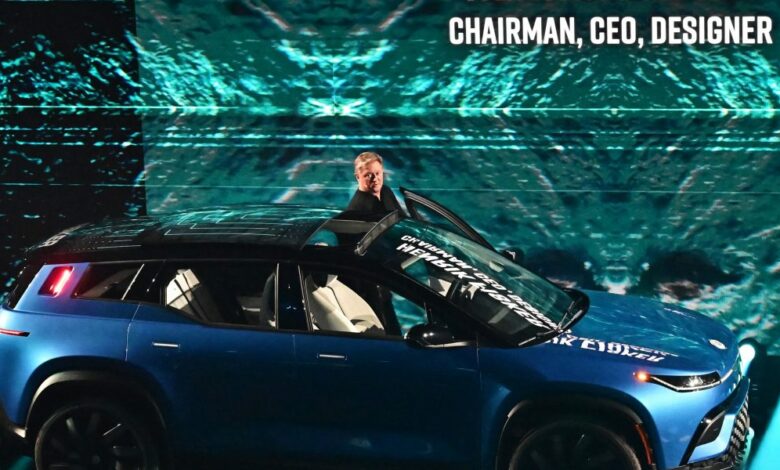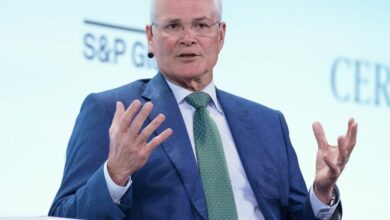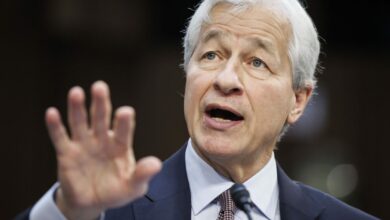What happened to EV-maker Fisker that just got delisted from NYSE

Fisker Inc. once likened itself to Apple.
CEO Henrik Fisker wanted his EV startup, which just got kicked out of the New York Stock Exchange, to be different from others. Like Apple’s novel approach of outsourcing the job of putting its gadgets together to Foxconn, Henrik Fisker wanted to do the same with Austrian manufacturer Magna Steyr. And he did.
But now, none of that may matter because Fisker faces an altogether different challenge—possible bankruptcy.
What went wrong with the Danish auto designer’s eponymous company?
Launch and early years
The California-based Fisker launched in 2016, after its founder’s former startup called Fisker Automotive folded a few years earlier.
At the time, Fisker said he was hoping to invest in new tech that helped his company develop rapidly while making affordable all-electric SUVs. A challenger to the market-leading Tesla, if things went well.
In the meantime, as the EV craze was beginning to catch fire, Fisker managed to gather the interest of investors looking to foray into the space. Although Fisker came with top-notch design expertise, he also had a complicated history given his first failed startup. But his new company looked promising in the clutter of EV and EV-adjacent companies that were rushing to get a slice of the action in the late 2010s.
In 2020, the company went public via a Special Purpose Acquisition Company (or SPAC) on the New York Stock Exchange. At the time, the company projected revenue of $13 billion by 2025 (it was pre-revenue in 2020).
Bringing Fisker’s concept to market was the next ordeal. A slew of software, supply chain and regulatory problems meant the company’s first model, the Fisker Ocean, didn’t start delivering its cars until a year ago.
Some of Fisker’s problems ring true for the entire EV industry as demand slows, price competition increases and investor interest wanes. Several EV industry players have folded because of these headwinds, including Arrival and Lordstown. But Fisker’s strategic decisions—including pivoting to a dealership network from a direct-to-consumer model—have only made matters more complicated to fix given the current EV climate.
Joan Cros—NurPhoto/Getty Images
Trouble in paradise
Fisker’s laundry list of problems have only mounted since the start of this year.
The company has become the subject of a probe after users complained about their Fisker cars rolling away. Its Ocean SUVs are now being investigated by U.S. federal regulators over brake-related problems.
It’s also in deep financial trouble. In its full-year earnings report last month, the Tesla-rival made close to 10,200 EVs but only delivered 4,900 of those. Fisker also said at the time that it was precariously cash-strapped and hoped to receive an investment from “a large automaker.”
It laid off 15% of its staff as it planned to pivot its strategy amid liquidity issues. Not least, it raised “substantial doubt” over its ability to continue with operations.
Fisker received a warning from NYSE because of its low stock value in February. On Monday, within a month of the previous notice, the company was delisted from the world’s biggest stock exchange.
The cocktail of problems has brought the ambitious EV company closer to bankruptcy than ever before.
Is this the last leg?
Earlier this month, Fisker said it would suspend production for six weeks as it missed an interest payment and would try to raise $150 million by selling convertible notes. It’s long-awaited talks with that unnamed “large automaker” for a possible investment fell through this week.
The California-based Fisker’s last beacon of hope was reported to have been Nissan, the Japanese auto giant, which pulled out at the last minute, according to Reuters.
Fisker’s future has never felt so uncertain, and whether the company does manage to claw its way out of crisis during the ongoing EV winter remains to be seen.
But Henrik Fisker has remained optimistic throughout. He told Yahoo Finance this month that he believes “we have a future—otherwise I wouldn’t be here.”
“And I believe we’re gonna manage to get out of this, I would say, general EV slump that there is out there,” he said.
Fisker could do with that optimism.
Source link




